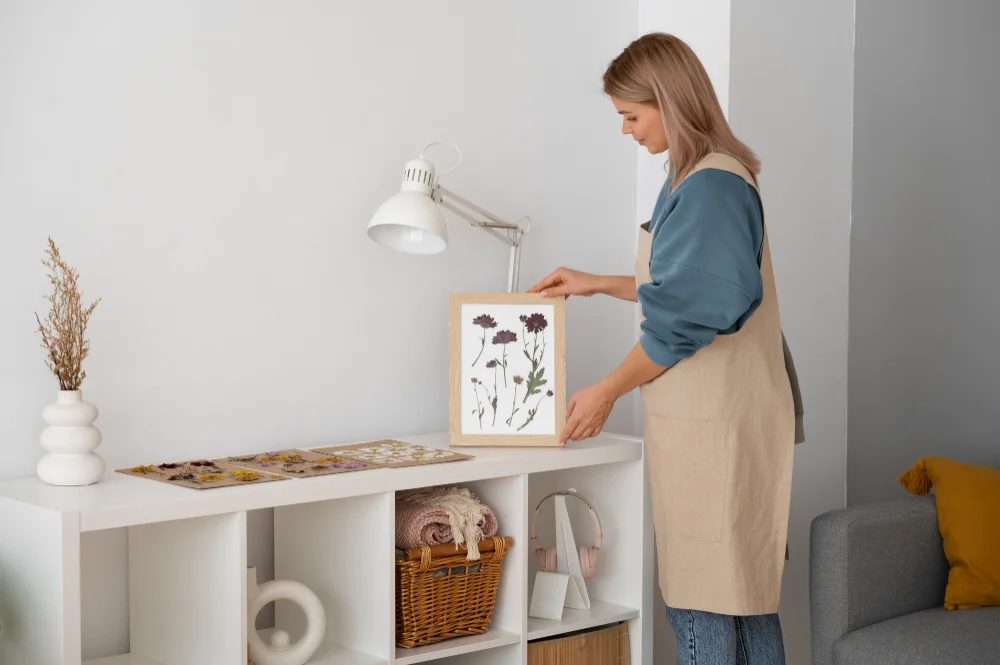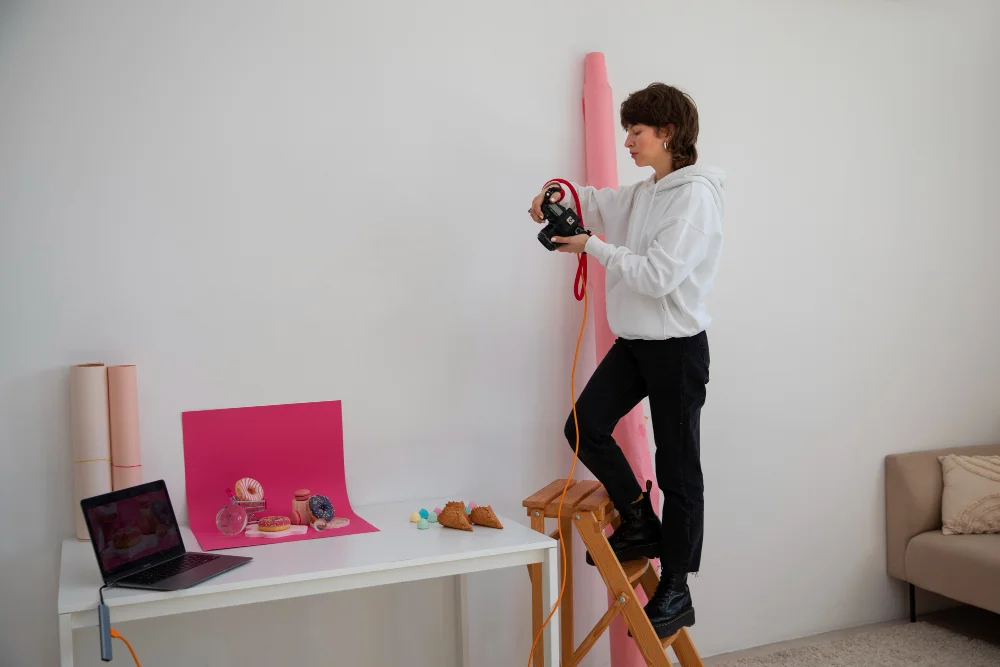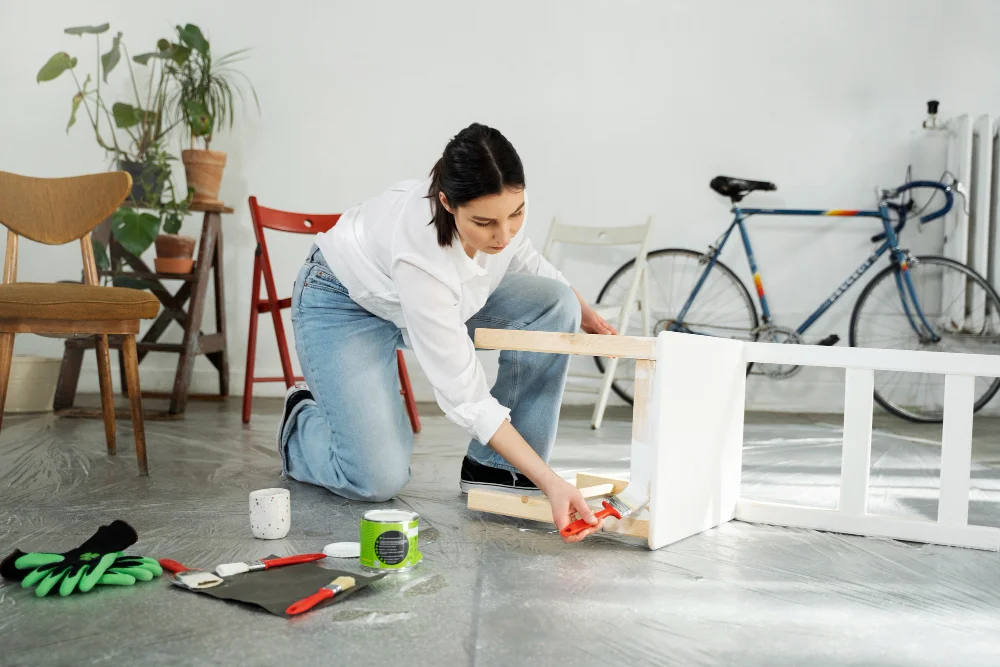If you want to give your room a fresh and stylish look without spending too much, then DIY decorating for the room is the perfect choice. It allows you to decorate with your own creativity, add a personal touch, and save money at the same time.
DIY projects make your space not only functional but also unique to your personality. In this blog, we will explore powerful ideas, easy methods, and practical tips to transform your room beautifully.
Planning DIY for Decorating a Room
Before you jump into any DIY project, planning is the most important step. It helps you save time, money, and effort while ensuring that the outcome matches your vision. Two key elements in planning are creating a mood board and measuring your space.
Create a Mood Board
A mood board is like a visual map of your ideas. It brings together your favourite colours, patterns, and décor inspirations in one place. By collecting pictures, fabric samples, or even paint swatches, you can get a clear sense of how your room will look before you start.
This step helps you avoid confusion later, keeps your style consistent, and allows you to experiment with themes without making permanent changes.
Measure and Plan Your Space
The second step in planning is measuring your room carefully. Note the dimensions of walls, windows, doors, and available floor space. Once you have accurate measurements, sketch a simple layout to decide where furniture and décor items should go.
This way, you avoid overcrowding, ensure balance, and make the most of your room’s size. Proper measurement also prevents unnecessary shopping and wasted resources.
DIY Decoration Ideas for Rooms
DIY works best when you begin with small, creative projects. Changing cushion covers, adding wall art, or making DIY lamps can instantly change the vibe of your room and encourage you to try bigger projects.
Simple and Effective DIY Projects
Here are some easy DIY projects that can give your room a fresh look:
- Recycled Frame Wall Art: Paint old frames and use your own sketches, photos, or art inside them.
- Stencil Wall Designs: Use masking tape or stencils to create geometric or floral patterns on your wall.
- DIY Hanging Lights: Turn glass jars into creative hanging lamps.
- Pegboard Organizer: Use a wooden board with hooks for both decoration and storage.
Colors, Textures, and Themes in DIY for Decorating a Room

Colours, textures, and themes define the character of your room. Choosing them carefully ensures harmony and balance in decoration.
Picking the Right Colors: DIY for Decorating a Room
Soft colours like white, cream, and light blue make small rooms look spacious, while darker shades create a dramatic effect. Choose colours that reflect your mood and the purpose of the room.
Adding Texture with DIY for Decorating a Room
Textures bring life to any space. You can add fabric cushions, wooden furniture, metal accents, or indoor plants. A layered mix of textures creates warmth and depth in the room.
Choosing a Theme
Themes like rustic, minimalist, or Scandinavian help guide your decoration choices. Once you select a theme, every décor element naturally follows that style.
DIY Furniture and Smart Storage
Furniture and storage solutions are the backbone of any room. With DIY, you can make them budget-friendly and personalised. First, think about functionality: what do you need more storage, seating, or display areas? Then design accordingly.
For example, just like a well-structured recipe balances ingredients, creating a room setup also needs the right mix of elements, and you can take inspiration from lifestyle guides such as this Whole Foods Chantilly Cake recipe
DIY Storage and Furniture Ideas
- Cube Shelves: Create cube-style shelves with wooden panels.
- Under-Bed Storage Drawers: Build wooden drawers that slide under the bed for hidden storage.
- Vertical Storage Tower: Slim, tall shelving units for corners maximize space.
- Storage Bench: A bench with a flip-top seat offers both storage and seating.
Small Details That Make a Big Difference

Never underestimate the power of small decorative details. These are what make your room feel warm and personal. Handcrafted cushion covers, unique lamp shades, small indoor plants, framed quotes, and personal photos bring individuality to the room. Such details cost less but add immense charm.
Lighting, Mirrors, and Visual Balance
Lighting is not just about brightness; it creates mood and atmosphere. Combining natural and artificial light enhances the room’s appearance. Mirrors also play an important role by reflecting light and making the room feel larger.
Tips for lighting and balance:
- Use sheer curtains to let natural light in.
- Add dimmable lights to control brightness.
- Place mirrors opposite windows for maximum reflection.
Adding a Personal Touch
Decorating a room becomes truly meaningful when it reflects who you are. Adding a personal touch means going beyond standard décor and weaving your story into the space. Start with handmade crafts, customized wall art, or DIY photo frames that capture special memories.
Displaying travel souvenirs, family heirlooms, or objects that inspire you can instantly make the room warm and welcoming. Personalization can also come through fabrics like creating your own cushion covers, curtains, or bedspreads using favorite patterns and textures.
Even small details such as hand-painted flower pots, jars filled with seashells, or a DIY vision board can transform a plain area into something uniquely yours. For example, choosing the right kitchen decor sets can instantly refresh the atmosphere and make your space both stylish and functional. By infusing creativity into every corner, you ensure the room doesn’t just look stylish but also tells your personal story.
Long-Term Care and Maintenance in DIY for Decorating a Room
A well-decorated room needs consistent care to stay fresh, functional, and inviting. Long-term maintenance is about preserving both the beauty and durability of your DIY efforts. Begin by setting a routine for cleaning and dusting furniture, shelves, and décor pieces so they always look new. Wooden items should be polished regularly, while fabrics like curtains, bed covers, and cushion covers should be washed or replaced seasonally.
If you’ve used paints or adhesives in your DIY projects, check for peeling, fading, or loose fittings and repair them promptly to prevent bigger issues. Rotating or rearranging decorations every few months helps avoid monotony and gives the space a refreshed look.
Seasonal updates, like adding warm tones for winter or bright patterns for summer, keep the room aligned with changing moods and weather. By treating your décor as a long-term investment, you not only extend the life of your DIY creations but also maintain a room that always feels comfortable, inspiring, and well cared for.
Conclusion: DIY for Decorating a Room
DIY for decorating a room is not only about saving money but also about creating a space that reflects your identity. From planning with a mood board to choosing colours, building DIY furniture, and adding small personal touches, each step makes your room special.
With creativity, patience, and thoughtful design, you can turn even the simplest space into a stylish, cozy, and functional environment.











